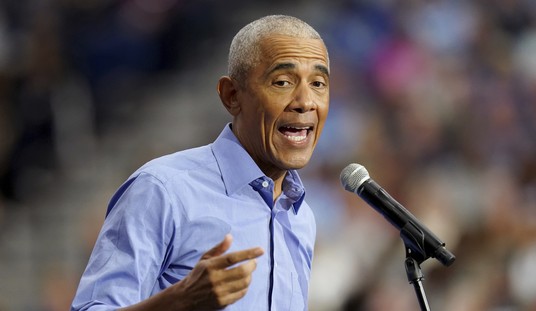There is a very good reason why the state of Maryland was not unhappy about giving away some 44,000 acres of its territory in 1790.
The soggy, insect-ridden 69 square miles of land hard by the Potomac River was, quite literally, a swamp, an inauspicious place to locate the District of Columbia as the new nation’s official capital.
Drainage remains a serious problem there to this day. Some of us haven’t cared much for the Washington swamp at any time.
But summers are, and were, a particularly unpleasant time to be there. Abraham Lincoln, for instance, spent his first summer in the White House. But that was enough for him.
For all three of the remaining summers in his tragically abbreviated presidency, Lincoln moved himself and his entire family to a government cottage some three miles north.
He would commute by horse if necessary, politely greeting people and tipping his big hat along the way. But otherwise, the Lincolns could exist in the shade and cooler breezes of a more pleasant, open place, a virtual pioneer of the work-from-home movement.
The upside to having a national capital in a fetid swamp was that it helped enforce the Founding Fathers’ idea of part-time government by citizens with full-time private lives. Many states have managed to maintain part-time legislatures.
The heat, humidity, and dust from Washington's unpaved streets encouraged legislators to leave their D.C. boarding houses and return to real homes in the places they were supposed to be representing.
They don't do that so much anymore. Congress is now a full-time, well-paid job ($174K a year). That’s thanks to Willis Carrier’s blessed invention of air conditioning. And to the fact that most members of Congress now live full-time in the Washington area. Their district "residence" address can actually be a leased hotel suite.
This means that when they travel to their districts for these summer recesses or any visits, members of Congress have actually turned into representatives of the federal government to the voters. It’s their district, for sure, but not their "home" anymore.
Anticipating organized protests by anti-Trump addicts, many Republican members are skipping open town hall meetings this year. Besides the standing Trump Derangement Syndrome, the current protest excuse is the major piece of legislation President Trump signed last month. It was definitely big, but some do not regard it as beautiful.
Nebraska’s GOP Rep. Mike Flood encountered a few hundred angry folks at his recent town hall in Lincoln:
I think it’s somewhat cathartic for them to be able to have the opportunity to address their representative government. I tell the police before I start …
I do not want anybody removed or arrested. I want them to be able to say what they have to say. This is part of the deal. This is the way people feel right now.
Anyway, August is not meant for intense attention to politics. It’s meant for car trips, reunions, beaches, pools, and mowing grass — again and again and again.
This time, the summer hiatus benefits Democrats, who remain in divided disarray after the return of their worst nightmare to the White House. A wiser, better-organized Trump has been in mid-season form since Day One. Today is Day 202 of 1,461.
Fifteen years ago, however, the summer-recess shoe was on the other foot.
Holding a 257-178 House majority after Barack Obama’s 2008 election, Democrats under Nancy Pelosi, the first female Speaker, had rammed through a $787 billion economic stimulus spending bill and the immense, 1,000-page ObamaCare health legislation without a single GOP vote.
Remember Pelosi’s iconic quote, "We have to pass the bill so that you can find out what is in it.” Obama signed the controversial measure on March 23, 2010. That was when then-Vice President Joe Biden was caught on a hot mic calling the occasion "a big f****** deal."
The congressional recess that summer exploded with local protests and with raucous town halls across the country. Some were not mostly peaceful.
That year also saw the impressive spread of the Tea Party Movement launched during Rep. Ron Paul’s unsuccessful 2007-08 presidential campaign.
While Paul’s bid was futile, the Tea Party birth was the exact opposite. Its growth was fueled by opposition to the Obama-Biden administration, its Democrat Party’s arrogance while in overwhelming control of Congress, and the chronic inattention of both Swamp's political establishments to Heartland frustrations and anger.
Tea Party thinking became a major factor in the wave election of the 2010 midterms and, I believe, set the resistance stage to enthusiastically accept a disruptive, political outsider like Donald J. Trump. He skillfully tapped into that and cemented local support by listening, and then — are you sitting down? — actually doing exactly what he said he would do in both terms.
Denizens of the nation's wheeling-dealing capitol forget the simple power of keeping your word. You can get away with a lot of other things if folks can count on your word or handshake.

Obama grew up in Jakarta and Hawaii, began college in California, finished in the Northeast, and then adopted Chicago as a convenient, Democrat-controlled home. He was in the Heartland, but not of it.
And Obama's political attention was always focused entirely on Obama. He did precious little to expand or even keep his party’s congressional control and national apparatus.
The first midterm elections of a new president are often more of an interim verdict on the White House occupant. And Obama was soundly convicted in 2010. He later called it “a shellacking.”
Democrats that year lost 63 House seats, the worst showing since the mid-1930s, making Pelosi’s speakership short-lived. Republicans gained six Senate seats. That year, the GOP even won a Massachusetts Senate seat for the first time in more than six decades.
While those federal results got the greatest attention, the most serious and long-lasting Democrat damage came at the state and local levels. There, Republicans captured control of 11 new governors’ offices to give them 29.
Additionally, thanks to an organizing drive, the GOP had a net gain of 680 state legislative seats, taking control of 20 more state chambers.
This was blamed on Obama’s inattention and his unpopularity, messy and controversial congressional actions, and the ineffectiveness of the economic stimulus spending. Implementing that costly measure was assigned to Vice President Joe Biden.
You may remember Biden’s frequent promise that thousands of “shovel-ready jobs” would erupt next month. Or the next month. Or maybe the month after that. They never did arrive, so that would become a regular laugh line that even Obama used.
Vigorous new real employment growth did not appear until the next president cut red tape, slashed regulations, and boosted oil and gas production, eventually producing energy independence.
The impact of Obama’s massive party losses did not end there. To this day, Democrats have yet to recover all the lost local seats.
The unprecedented new state GOP majorities and governorships allowed enactment of numerous conservative policies in states such as tax cuts, restricting abortion access, weakened labor unions, and reduced government regulations.
Most importantly, the enhanced state legislative majorities also awarded Republicans control of the decennial legislative reapportionment process from the 2010 Census. And that built in future election wins.
Even by 2020, thanks to the 2010 successes, Republicans still held 52 percent of all state legislative seats and controlled 60 percent of all state legislative chambers.
They also had complete political control (governor’s office and state legislatures) in 21 states to Democrats’ 14.
That is why Trump and his political operatives are paying such close attention this year to two key issues. One, to interim reapportionment struggles in key red states like Texas, where the GOP hopes to pick up House seats to help build more durable control there.
And second, to avoid the mistakes of 2018 when the GOP lost 41 House seats, more than the average losses for a president’s first term.
Some candidates that cycle were personal Trump picks but not the best campaigners. This time, Trump and his team are actively working behind the scenes to select the best candidates and campaigners and avoid divisive state primary fights.
Defeated Democrats are still fighting amongst themselves over why they lost in November and struggling to rebuild vigorous fundraising among reluctant donors. In horror, wealthy donors watched Kamala Harris burn through 1.5 billion of their dollars in just 15 weeks on her way to defeat last fall.
To show the unusually high priority he attaches to fundraising this cycle, Trump has appointed a most trusted surrogate, Vice President JD Vance, as the actual, active finance chair of the Republican National Committee.
During a brief stop in Nantucket the other day, Vance picked up $3 million, an island record, and an undisclosed additional amount at an Indianapolis fundraiser Thursday. Numerous other events are planned into the fall.
Not coincidentally, these early contacts with donors and candidates will give Vance a financial leg up on other potential GOP candidates should the vice president seek to succeed Trump, as expected.
In June alone, the Democratic National Committee raised only $8.6 million, barely half what the RNC took in.
In the first half of this year, the RNC collected $96.4 million in contributions and still has $80.8 million on hand. The DNC, with its new chair of Ken Martin, raised $69.2 million, but has only $15.2 million left.
That yawning gap pretty much confirms how Democrats love to spend money, especially if it's somebody else's.













